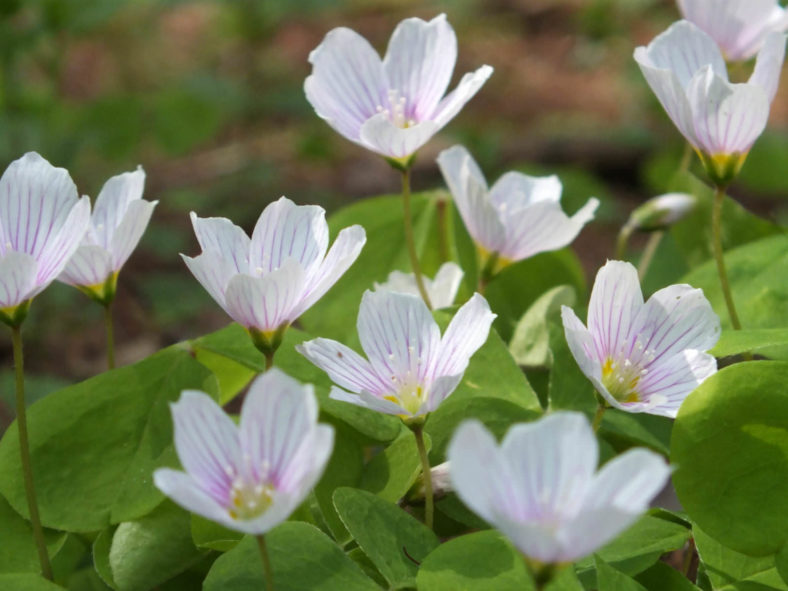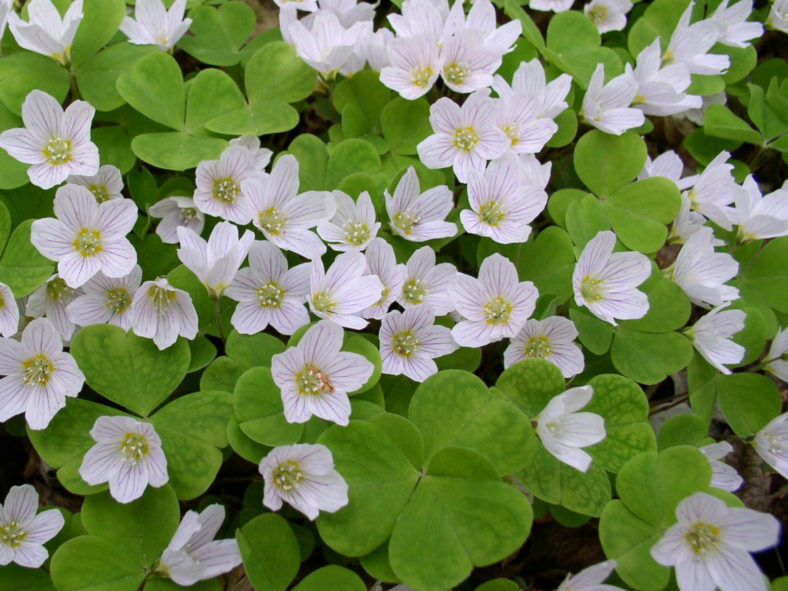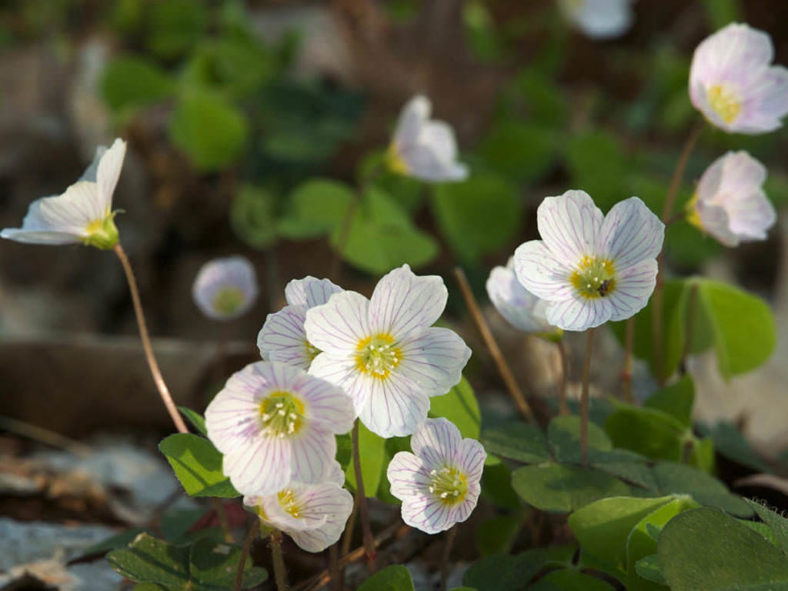Scientific Name
Oxalis acetosella L.
Common Name(s)
Wood Sorrel, Common Wood Sorrel, Cuckoo Bread, European Wood Sorrel, Irish Shamrock
Synonym(s)
Oxalis montana, Acetosella alba, Oxalis acetosella subsp. acetosella, Oxalis alba, Oxalis americana, Oxalis longiflora, Oxalis nemoralis, Oxalis taquetii, Oxalis vulgaris, Oxys acetosella
Scientific Classification
Family: Oxalidaceae
Genus: Oxalis
Flower
Color: White with pink streaks
Bloom Time: Spring to midsummer
Description
Oxalis acetosella is a perennial herb with trifoliate compound leaves. The leaflets are made up of three heart-shaped leaves, folded through the middle, that occur on up to 4 inches (10 cm) long petioles.
The plant blooms from spring to midsummer with small white (red or rarely violet) flowers with pink streaks. The flowers close during the night or when it rains, and the leaves fold.

How to Grow and Care
Oxalis can be grown indoors as a houseplant or outdoors in the garden. They from the garden center are generally available in the fall or early spring. Oxalis need bright indirect light to grow well and produce flowers. They can often bloom all winter if kept in a sunny spot.
Keep the Oxalis soil barely moist but never soggy; allow the top 2 inches (5 cm) of soil to dry out before watering. It's best to water an Oxalis from the bottom so that the thin, fragile stems of the plant don't get waterlogged and the soil stays loose. Oxalis plants grow best in cool temperatures between 60ºF to 70ºF (15ºC to 21ºC) during the day and 55ºF to 65ºF (13ºC to 18ºC) at night. The soil for an Oxalis should be loose and sandy rather than rich and organic. Feed an Oxalis monthly in the spring and summer when actively growing with a basic houseplant food at ½ the recommended strength. Never feed an Oxalis when it is dormant and the bulbs are resting.
See more at How to Grow and Care for Oxalis.
Origin
Oxalis acetosella is native to Asia and Europe.
Links
- Back to genus Oxalis
- Plantpedia: Browse flowering plants by Scientific Name, Common Name, Genus, Family, USDA Hardiness Zone, or Origin
Photo Gallery
Click on a photo to see a larger version.




